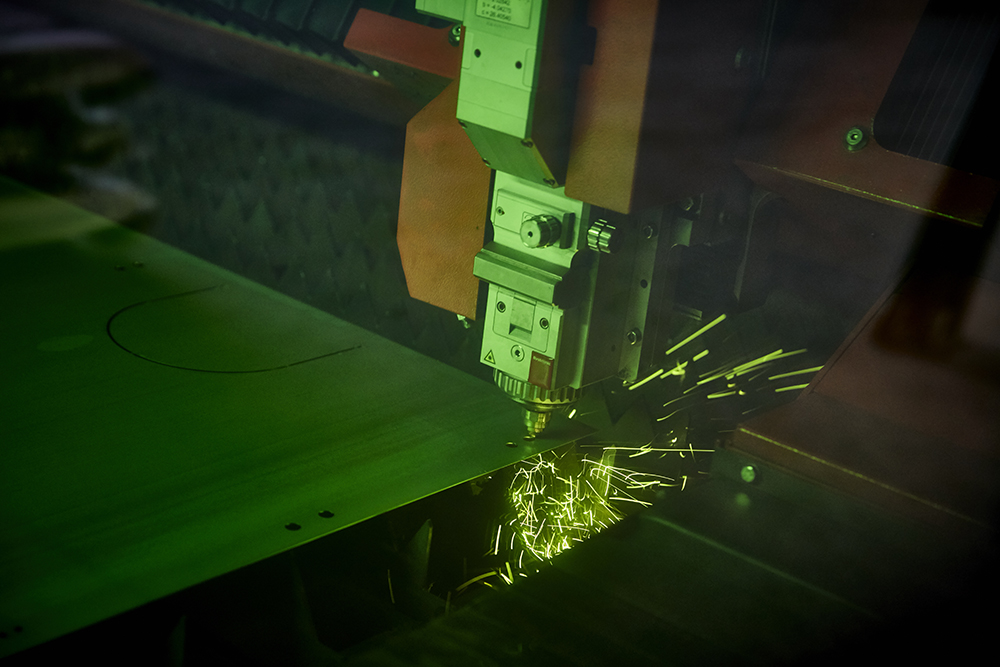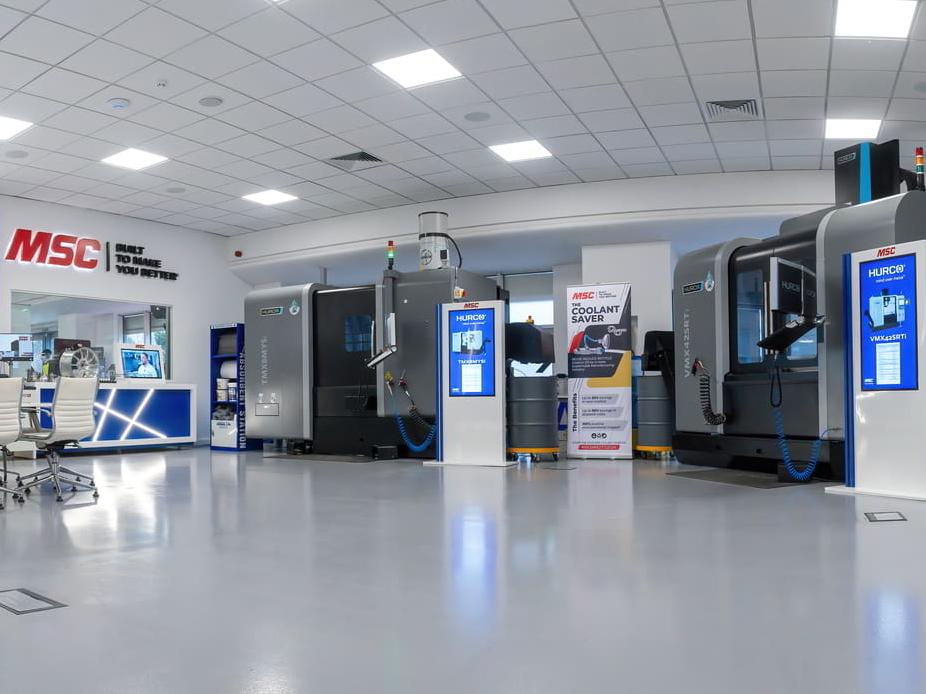September cover story: Cutting a path to prosperity

Yorkshire-based Malton Laser has seen impressive growth over the last 17 years. Ed Hill speaks to its founder, Charles Corner, about how the latest manufacturing technology is driving the company’s success.
The managing director of Malton Laser is no stranger to taking risks. Having raced superbikes for 37 years, where speeds can reach more than 160mph, Charles Corner is confident in his judgement about the best way ahead, and that applies to his business too.
Formed in 2000, Malton Laser has grown from a single 4,000ft² business unit operation to now occupying seven. The company employs 30 people and offers not only sheet metal cutting services but also CNC press brake processing, welding, fabrication, powder coating, assembly and Radan 3D software to help clients develop products for manufacturing.
Mr Corner’s experience of sheet metal work was not extensive at the time he started Malton Laser. “My background is mechanical engineering. I trained as an apprentice at RAF Fylingdales, which is a ballistic early warning station on the North Yorkshire moors,” he explains. “After eight years there I started working as an engineer at some of the pork processing companies in the area.”
[caption id="attachment_25086" align="alignleft" width="266"] Charles Corner, managing director, Malton Laser[/caption]
Charles Corner, managing director, Malton Laser[/caption]
After a spell of self-employment Mr Corner was looking for a new business opportunity and had been impressed by the burgeoning laser sheet metal cutting industry.
“I saw laser cutting in a previous sales role and thought that there could be big opportunities. When I first saw it in action, I knew it had a future. Laser cutting is an extraordinary process. Cutting with just one tool you can do amazing things and as the technology develops it just keeps getting better and faster.”
The business began with one laser and one press brake. The first flatbed laser Mr Corner purchased was an Amada machine, which had impressed him when he visited the company to trial production of a part.
“I had actually gone to see a punch machine to see if it could make a component from 5mm mild steel but then I saw a small flatbed LC-Alpha 2 Laser in the showroom. It cut my part quickly and it came down the chute perfectly made. I was amazed at how well it worked. Since then I have never regretted getting into laser cutting production. Other metal cutting processes are like watching paint dry compared to lasers. The industry has developed now to the point where we are cutting incredibly fast.”
Total solutions
Malton supplies a broad range of customers in different sectors and over the years it has built on its capabilities to help build relationships with customers. Mr Corner says: “Laser cutting is the beating heart of the business but customers now want more from their suppliers. We not only cut parts, we press them, weld them, fabricate and finish them. That means they can usually just bolt on to our customers’ products.
“The sheet metal parts we produce are diverse – as are the industries we supply. Sheetmetal can be found in so many forms, from a small bracket, to a chassis, or machinery enclosure, to a building.
“We supply around 70 different trades and industries. We make access systems for Portacabins, signage, parts for food machinery, components for coaches and buses, motorsport and boiler components and many more. It means we are less likely to get dependent supplying just one sector.”

The biggest revolution in flatbed laser cutters has been the development of fibre laser cutting machines from their CO₂ counterparts. This new laser technology has had massive benefits for Malton. In 2015-16 the company’s turnover grew by 26%.
The company now has two Bystronic lasers: a 6kW Bystronic ByStar Fibre Laser and 4kW BySprint Fibre machine, which have replaced a former CO₂ model.
“I did have a very good Bystronic CO2 laser but it was around seven years old and maintenance costs were beginning to build up. At first fibre did not seem the right option for us because it could only cut thin sheet and we needed machines that could easily cut around 15mm. But in just two years the cutting performance of fibre machines has improved considerably to the point where they can pretty well cut anything.
“Bystronic showed me a fibre machine that previously had taken around 15 seconds to pierce a hole but which was now doing it in around half a second. That was the game-changing moment for me.”
Another advantage fibre laser has brought is lower running costs. Mr Corner’s spend on electricity for the machines dropped by around two thirds after the fibre machines were installed but cutting times are around two-three times faster. Fibre machines can also cut a broader range of metals compared to CO₂ lasers.
Adding automation
Future investment at Malton is focused on automation, which Mr Corner advocates enthusiastically. The company has just invested in a robotic welding cell using robots supplied by Panasonic.
“I chose Panasonic because the cells and robots are all made by the same company. Panasonic has given great support. The team regularly gets in contact to make sure we our getting the most out of the technology. Robots are also good for helping us win work because when new customers see the consistency of the welds being excellent time and time again, they are confident about giving us business.”
The company’s lasers also have automated loading systems and Mr Corner is looking to introduce automation on his next press-brake acquisitions as well: “I was selected to do a management development programme at Goldman Sachs and my final presentation was entitled ‘The Robots are Coming’. If the UK is going to be competitive then automation has to be part of its future.

“Robots have been in the car industry for many years and the big money from OEMs has allowed the development of some extraordinary technology. That is now being applied to the smaller subcontractor and workshop environment.
“Automation and robotics have to be adapted for our world, which is often not repetitive production. It has to take account of things like changeover times and ease of operation for programmers. At the moment cartesian systems for storage and loading for example can take up a lot of space but gradually they will become more compact and available at a price that will work for the smaller shop floor.
He continues: “As a manager of an SME, managing robots through the ups and downs of demand is so much easier than managing people. No one likes letting go of staff during a downturn, because often it also means laying off a friend. I like to have a core of staff who are really good at what they do and know I will need for the long-term. Automation means our productivity is higher and there is more job security for the staff I do employ; that has to be a better future for our industry.”
Future investment
So, success at Malton Laser looks set to continue, providing its policy of investing in the latest manufacturing technology remains at the heart of its business plan.
Mr Corner concludes: “I am open minded about new technology. I see the company going further with automation, including robotics and more CNC. I am lucky that I have some great people working with me. We have an excellent working culture; the best that I have ever experienced.
“We also have some loyal customers who know we are a good subcontractor and give us referrals for new business. It helps to win work if you can keep your promises. It sounds very simple but it’s like going to a restaurant, if you get good food and good service you will keep coming back. Although we are making products we are still dealing with people at the end of the day.”
MALTON LASER www.maltonlaser.com















